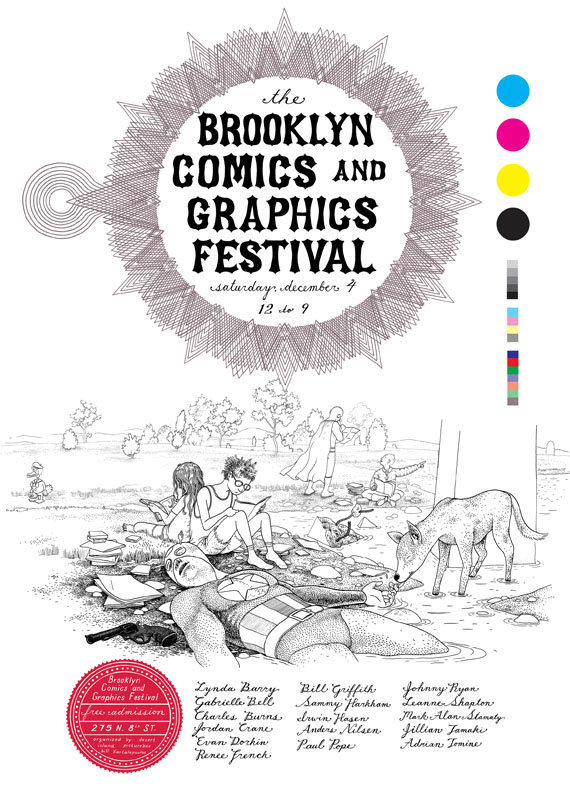TORONTO — Star Trek’s vast transmedia universe often reminds me of the fandom’s “infinite diversity in infinite combinations” (IDIC) philosophy.
Star Trek creator Gene Roddenberry originally intended IDIC as a Vulcan belief in the beauty of universal acceptance, which informed the universe’s worldbuilding. Many Trekkies took IDIC as permission to freely explore the “infinite diversities” of identities and sexualities in their fan activities. Fanfiction, fanart, and cosplay have many origins in Star Trek fandom.
To go boldly at the Varley Art Gallery, a regional cultural center in Markham, a Greater Toronto Area city, reflects a burgeoning field of contemporary art that explores fandom as a conceptual framework for art and exhibition making. The show, organized around contemporary artists who engage with Star Trek fandom, “aims to illustrate that space is not the final frontier, but rather a rich and diverse arena where science fiction, contemporary art, and fandom can coalesce,” writes curator Anik Glaude in the exhibition’s introductory wall text. While the show’s title references the series’ iconic “Space is the Final Frontier” speech, not all the works are Star Trek related. The result is a wavering curatorial directive: The show pulls back from fully exploring Star Trek because not all the works engage with it.
This jarring incongruity is established upon entering the first gallery space. To the left, a black-painted title wall mimics the cyan-blue-hued digital displays of Star Trek: The Next Generation’s Enterprise starboard consoles. On the opposite wall, Sonny Assu’s (Ligwiłda’xw of the Kwakwaka’wakw Nations) large-scale vinyl print depicts a futurist Northwest Coast-style spaceship flying high above an abandoned forest village site with dilapidated totem poles.
There’s no denying it’s a bold work. It is identified as a major inspiration for the show. But it has nothing to do with Star Trek: it comes from Assu’s 2014–16 Interventions on the Imaginary series, digital interventions of Canadian landscape paintings, a majority of which are by the West Coast modernist Emily Carr, perpetuating the fantasy of terra nullius. (Assu was commissioned to create an additional trio of works for the show that more directly engage with The Next Generation.)
While the outer space conjured in To go boldly feels vast, many works are wall-mounted, resulting in an expanse of wooden floors and empty white wall spaces that make the show appear sparse in its floor plan. Granted, many of the pieces were commissioned and accompanied by dense didactic text on shiny, Enterprise-console-mimicking labels. But as a writer and curator who researches fandom collaborative processes, I yearned for more tangible interpretive displays of fannish material culture — even a vitrine with fan zines and other Trekkie fan works would have been fine.

To its credit, the show includes strong works. Australian-Canadian artist Dara Gellman’s three-minute single-channel video, “Alien Kisses” (1998), reclaims a scene from a 1995 Star Trek: Deep Space Nine episode in which two women kiss. The video engages in many strategies typical of “vidding,” a fannish form of remix practice that creates music videos from found video sources. There’s the incremental, slow-burn pacing, a pixellated blue quality (likely due to copying footage from one VCR tape to another), a sensuous mid-tempo techno soundtrack, and a femslash gaze to revel in. Canadian artist Alex McLeod’s commissioned “Space Fossil” animation and “Chess Growth” 3D-printed chess set tackle the fanfiction “canon divergence” concept, imagining a Star Trek: The Next Generation “What If?” scenario where the Enterprise crew ignore warnings about warp drive’s harm on subspace life. (See the 1993 “Force of Nature” episode.) Featuring a fossilized Enterprise floating on an asteroid field, the works comment on climate change, but they could also be a comment on how toxic beliefs — for example, racist and sexist backlashes against diverse characters in a large sci-fi/fantasy fandom like Star Wars — can take hold in a fandom’s universe and not let go.
Still, I wondered, in my own fix-it on the exhibition, what would happen if the show opened with “You are the dreamer, and the dream” (2018) by Sky Hopinka (Ho-Chunk Nation/Pechanga Band of Luiseño Indians), a calligram tucked away on one side of the Main Gallery? It’s an arrangement of a Deep Space Nine speech from its highly regarded “Far Beyond the Stars” episode, in which the space station’s Black Starfleet commanding officer imagines he’s a struggling science-fiction author in the 1950s whose story about a Black captain leading a space station is rejected. Hopinka arranges the impassioned speech into the shape of a Ho-Chunk burial mound. It faithfully interprets how fans hold close Star Trek and its “infinite diversities.”
I would have placed that work front and center.





To go boldly continues at the Varley Art Gallery of Markham (216 Main Street Unionville, Markham, Ontario) through September 2. The exhibition was curated by Anik Glaude.



